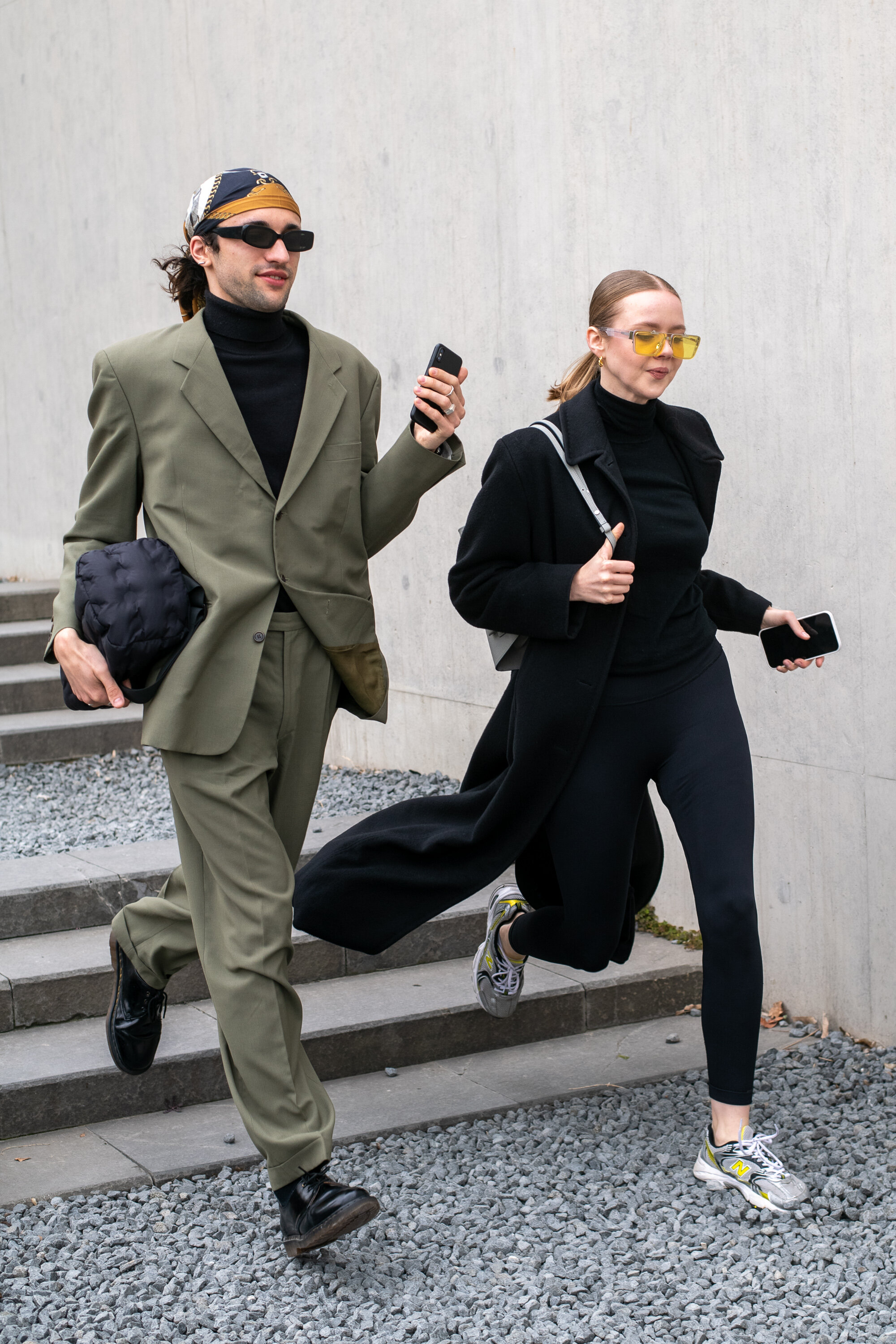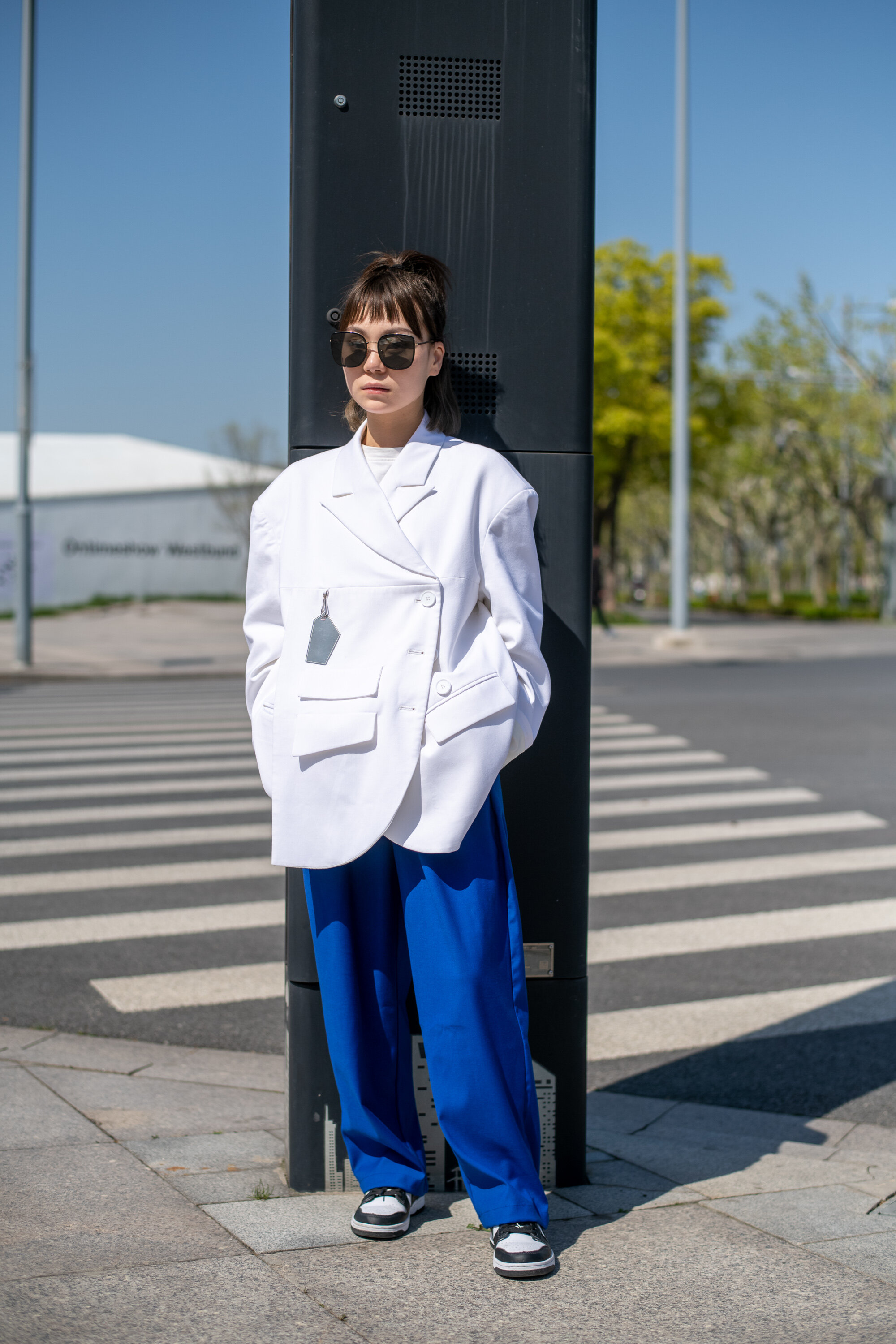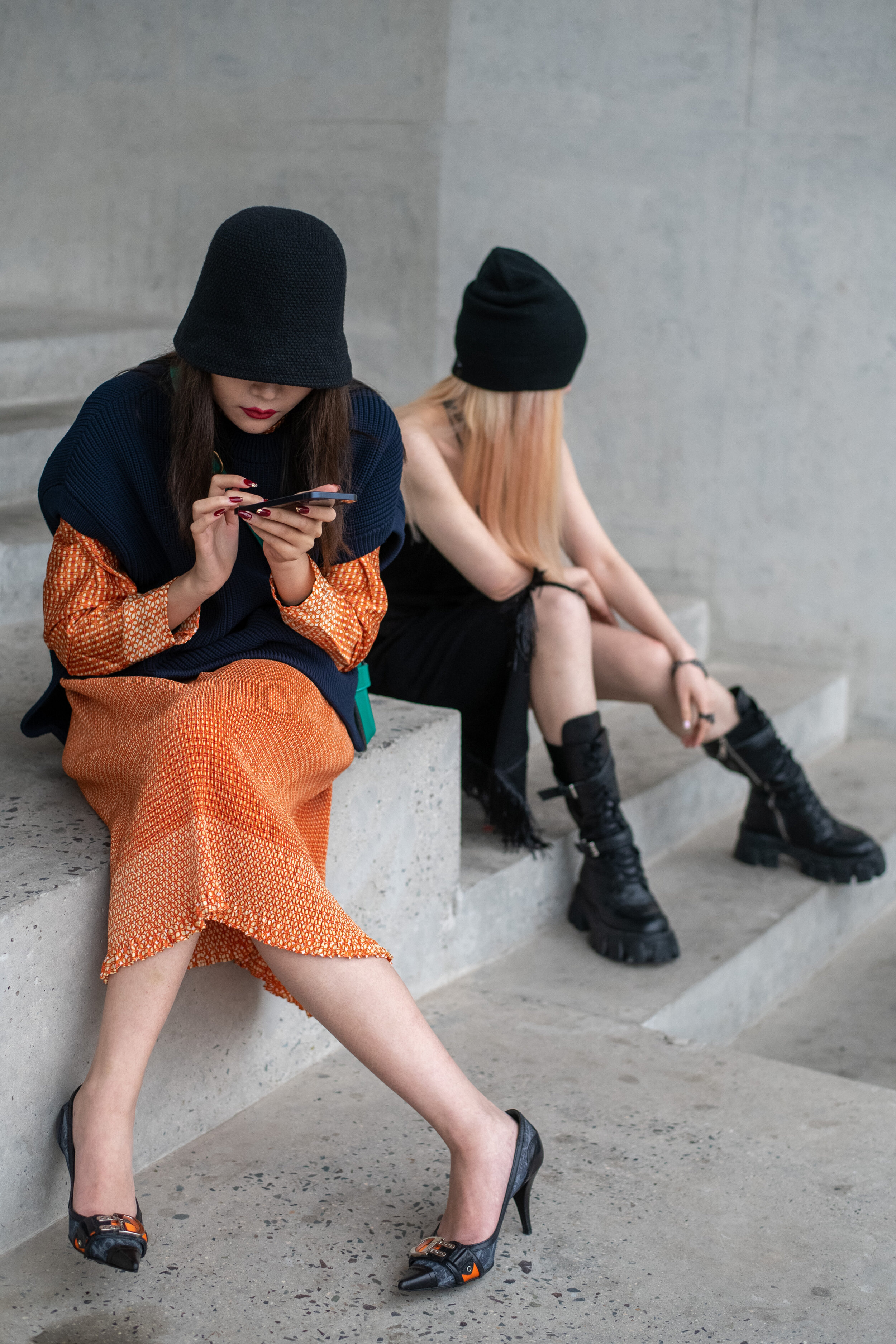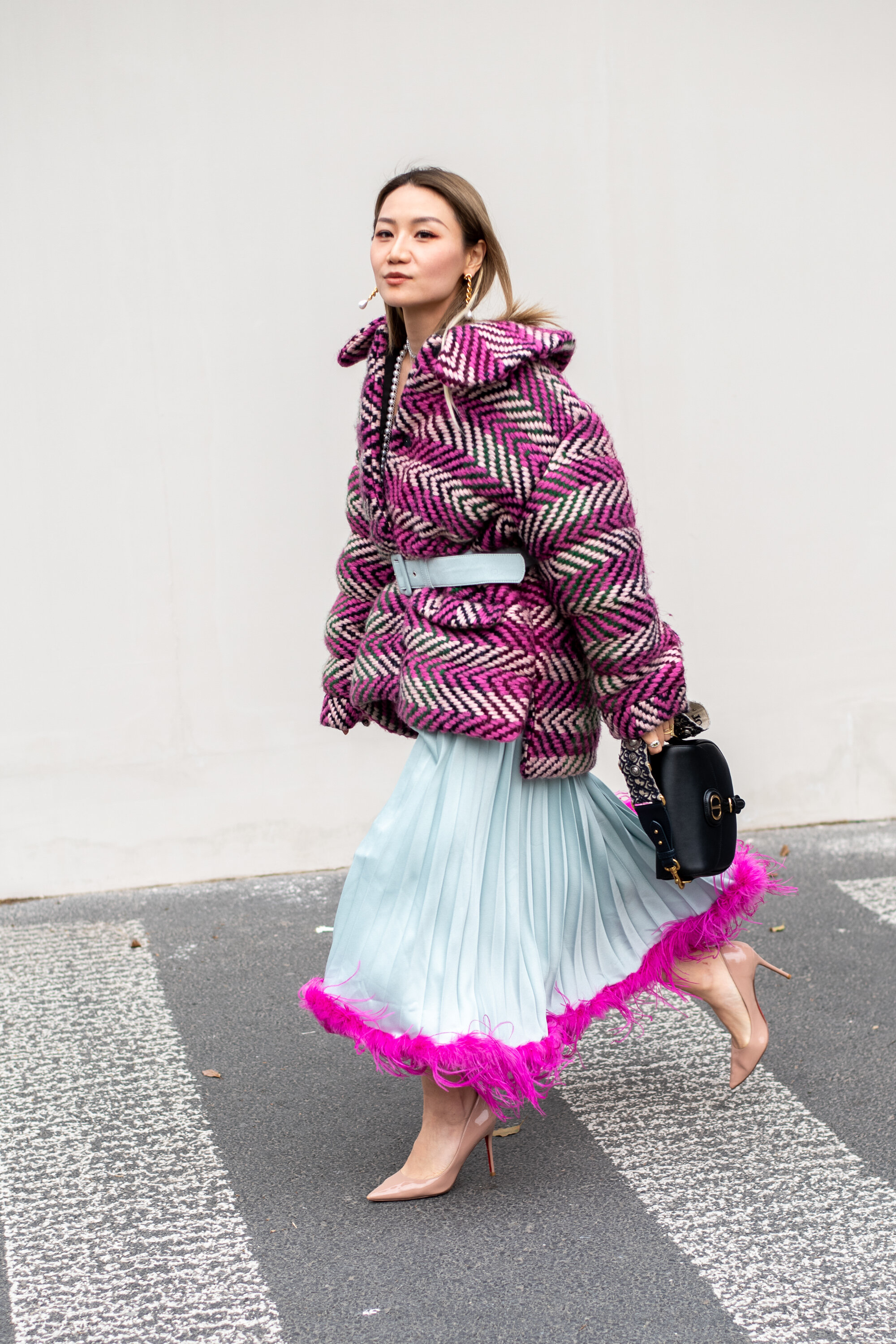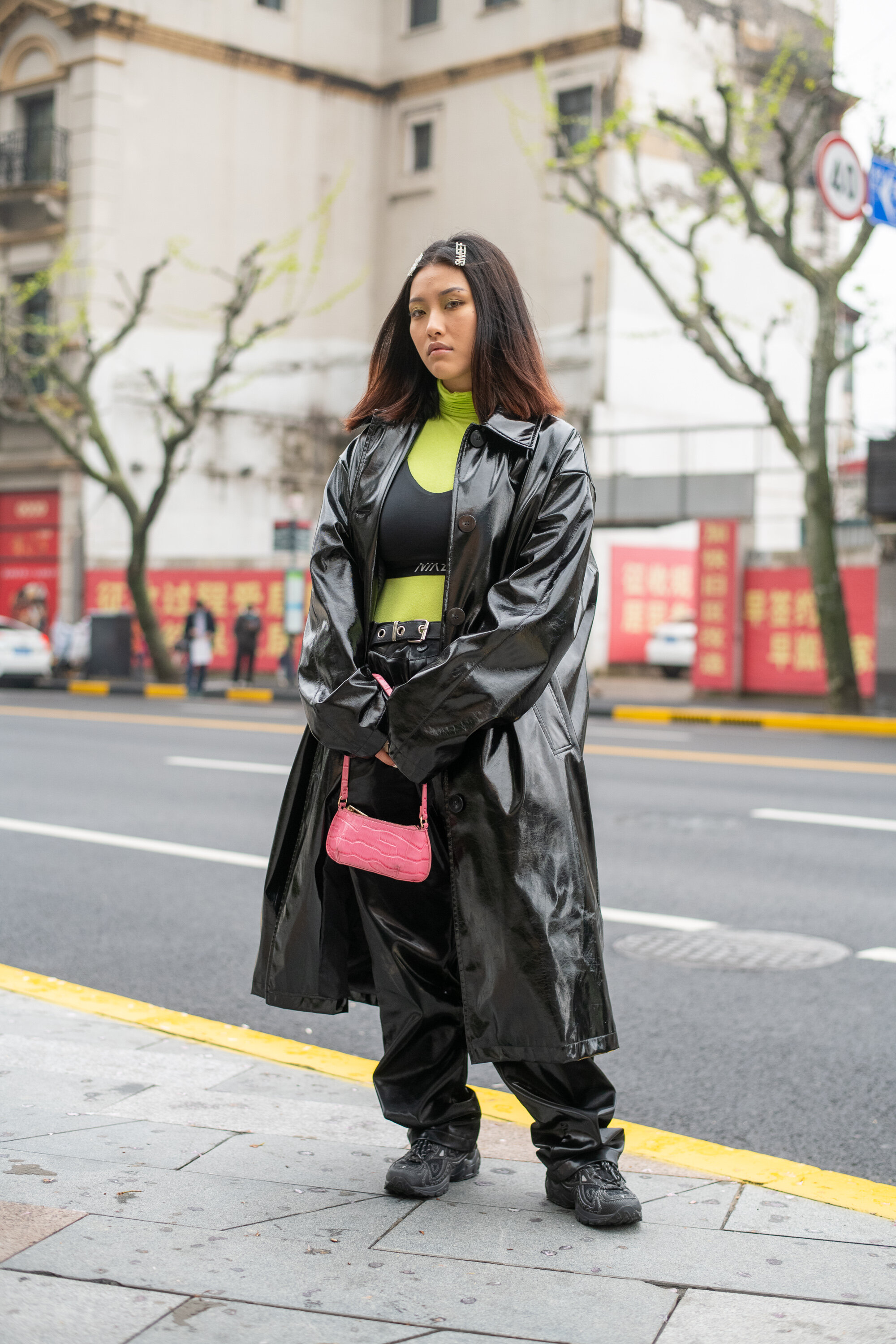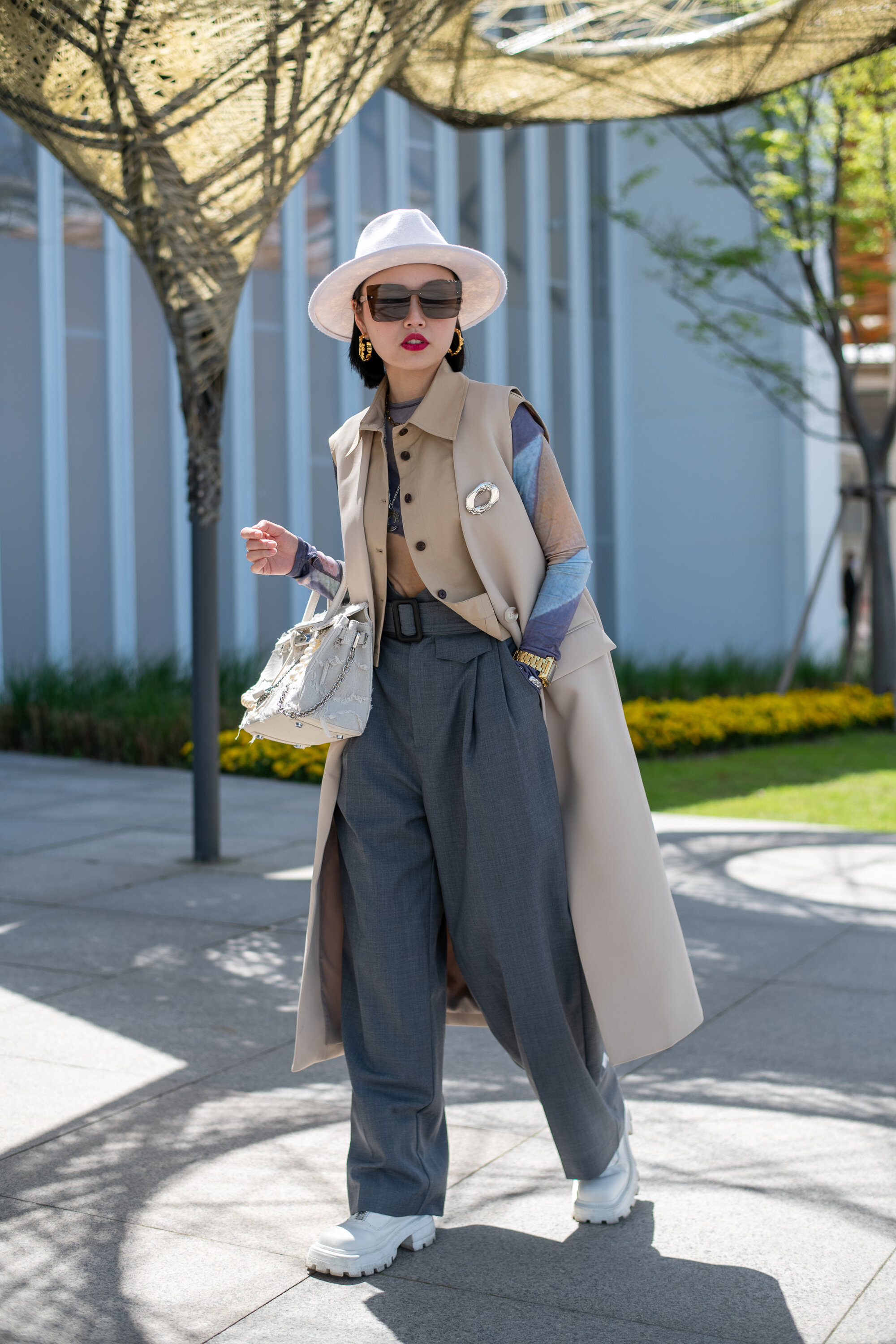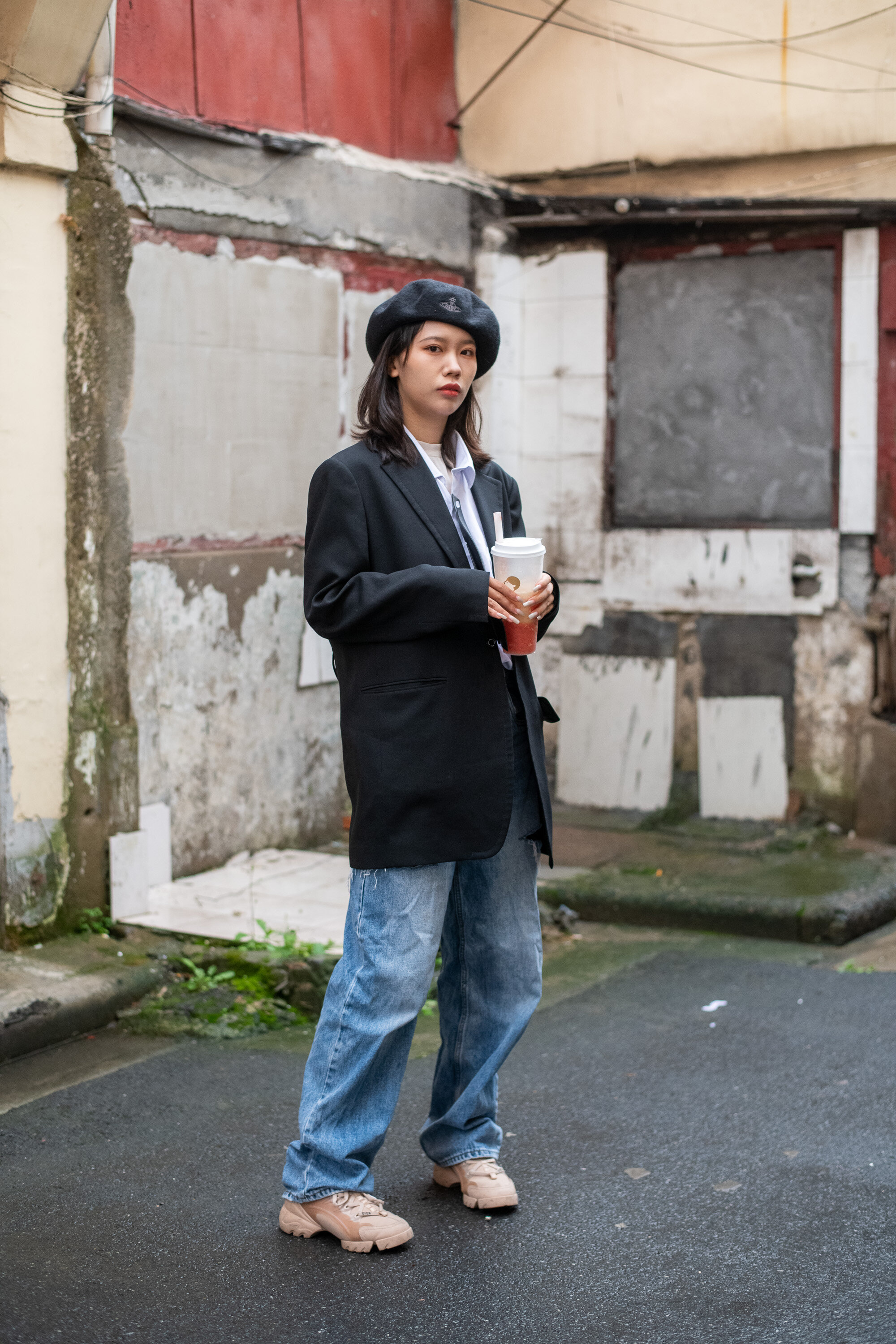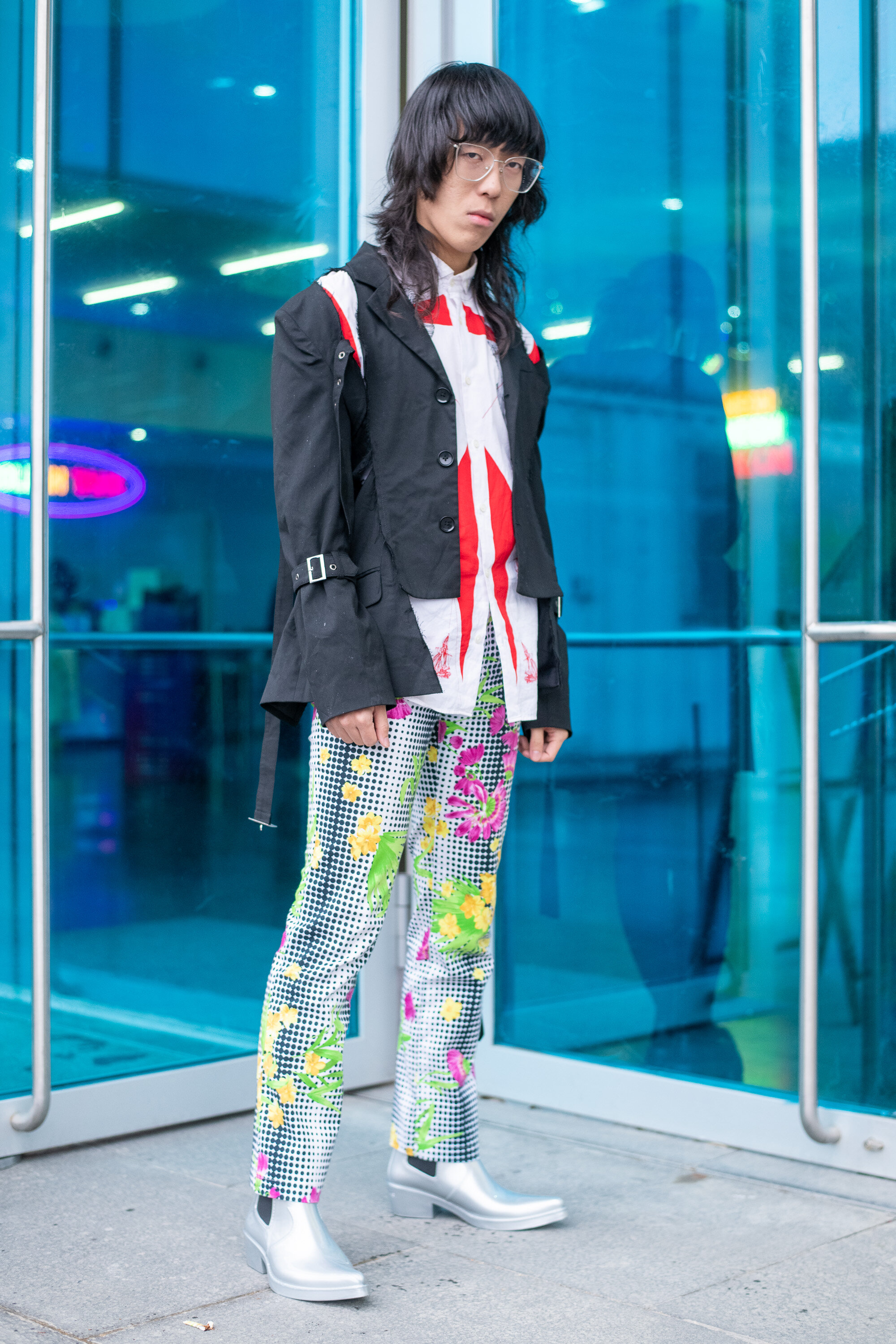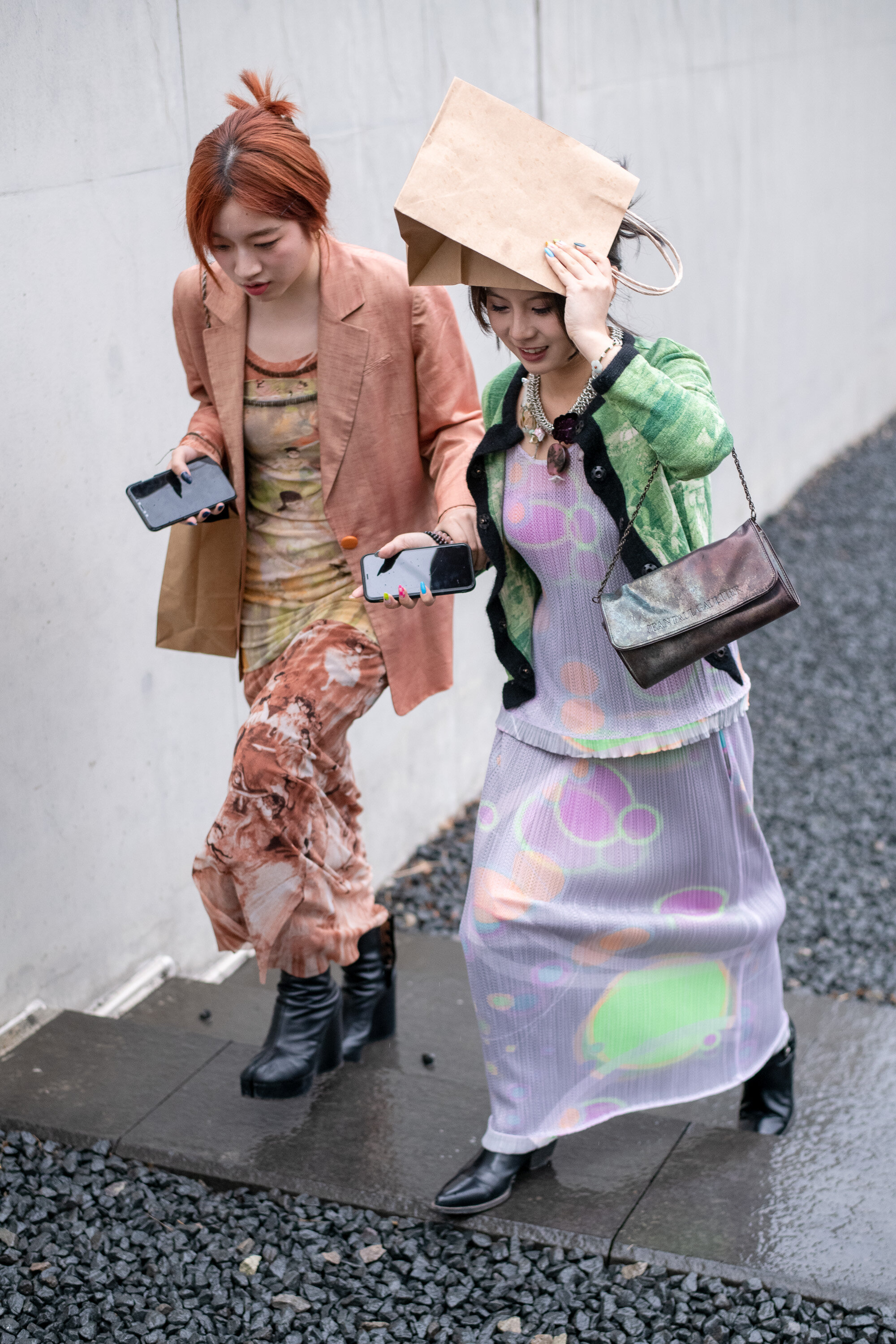A couple of weeks ago I did an interview I did for Central Studios’ social media channel, so thought I may as well sent it here.
I did re-post this on WeChat, but in case anyone’s not on WeChat and interested in my thoughts on shooting street fashion during Shanghai Fashion Week and other related things about this photographic sub-genre, here it is along with a little web gallery:
In case you don’t know, Central Studios is one of the main commercial photography studios in Shanghai. They were basically the first to establish a world class photography studio here, back in 2009. They are also a major production house and also host some fun annual events like the Central Studios Summer Fair.
INTERVIEW WITH CS CHANNEL
This week the A/W2021 Shanghai Fashion Week came to an end. This carnival for fashion lovers has become one of the city’s most glamorous seasonal attractions. Fashion week makes Shanghai streets a stage for both designers and fashion followers.
Australian photographer Dave is a two-time Walkley Award winner, a writer and director. Based in Shanghai since 2012, he has become a familiar figure on the streets of Shanghai during Fashion Week - one of the busiest weeks in a year for Dave, who works for US Vogue and WWD among other publications and brands.
We we sat down with him for a chat and to take a look at the street fashion in his shots from Shanghai Fashion Week.
CS: What's your idea of Street fashion and street fashion photography?
DT: Street fashion is about clothes, obviously, so once a someone’s style catches my eye, the important thing is that you need to be able to get a good look at the complete outfit. First off the photos need to be functional whether people are looking for ideas for their wardrobe or whether it’s for industry people using the photos for market research/trend forecasting. Details are fine, but otherwise I think shots should be waist up or head to toe. I’m a bit pedantic about composition and I try to avoid being sloppy by cutting off people’s toes or the top of their hats or whatever. Secondly, for me, street fashion photography needs to be aesthetically pleasing: a nice looking photo that makes eyes linger over it.
When I’m out shooting street fashion, I’m also on the look out for interesting juxtapositions of colours, patterns and shapes as well as moments of action where the timing has to be just right. This is more in line with pure street photography. It’s hard to shoot like this and I do need to keep my numbers of useable shots up, but when certain unexpected elements fall together, it’s when I’m most happy with my photography.
Street/documentary photography is what I’d go and shoot if I just grabbed a camera and walked out the door. I try to bring some of this into my work.
I’m also trying to deliver a variety of photographs. Even if I’m just approaching people for portraits, I’ll try to avoid using the same background twice, although sometimes that’s unavoidable.
If I’m going out to shoot on the street just for myself I also won’t stop people in the street and get them to pose for a portrait. This is one thing that I find a bit stressful during fashion week. However, it’s necessary for me to do this for street fashion. Normally if people have gone to a special effort to look good, they are happy to be noticed for it. It’s often a good idea to approach people to do a portrait. Otherwise I’d have too many photos of people standing or sitting around, staring at their phones.
CS: What do you see of SHFW or the fashion of this City over the last 10 years?
DT: Certainly Shanghai has become a focus of global fashion. The huge coverage that Vogue has given SHFW is evidence of that, although that’s partly because Shanghai is a currently fashion oasis in a global desert of fashion events due to the pandemic.
Over the ten years I’ve been shooting at Shanghai Fashion Week, one of the big changes is the diversity of styles and the confidence and edginess of the new generation of Shanghai’s fashionistas. It’s like there are a host of subcultures within the fashion scene here, why is a subculture in itself. This is why such attention had been paid to Labelhood over the last few years as an incubator of fresh new talent that also draws a young, artistic crowd. When I first started doing this, a lot of the kids I’m finding myself shooting repeatedly in the last couple of seasons wouldn’t even have been teenagers.
CS: Are you inspired by Bill Cunningham and Scott Schuman?
I wouldn’t call Scott Schuman and inspiration. He has certainly been influential and his style is imitated. I did get set in my ways a bit when I was shooting street style for the Wall Street Journal. They had various photographers in Asia shooting for them all in a house style (subject centre of frame, lowish angle, narrow depth of field), which was pretty similar to how Schuman shoots. From what I’ve seen of his work, he shoots with a 50mm lens. It’s a considered to be similar to what the human eye sees, although I feel this lens has slight telephoto effect, which kind of compresses the background. This is simply a practical way to isolate a subject in a portrait. Also, shooting from a low perspective also makes people appear taller and dominate the scene. I already liked shooting portraits with a 50mm lens at a wide aperture for narrow depth of field, so shooting I like that wasn’t exactly a stylistic departure.
I enjoyed the documentary Bill Cunningham New York. His photos are more lively than Schuman’s - he shot with a wider 35mm lens and was about movement. He basically invented street fashion photography but had no interest in making money out of it. In my opinion, Schuman basically took Bill’s idea and made himself very successful/wealthy by the savvy use of social media and marketing. Meanwhile Bill was shooting every day, rain hail or shine driven purely by passion for fashion and nothing else. He was the polar opposite of today’s influencers - a kind of anti-influencer. He wouldn’t even accept a glass of water in the events he shot. There’s a kind of integrity in that that I respect, but I’m happy to accept a glass of water at an event, but even happier to accept a canapé or a glass of champagne. I did learn a lot from watching his On The Street series on the New York Times. He had a kind of genius for drawing aesthetic connections.
As for other people who shoot street fashion, I particularly like the work of Kuba Dubrovski who shoots for WWD in the outside and backstage at the European fashion weeks. He shoots exclusively on a 35mm lens and delivers a lot of high quality shots with a great flair for composition.
Do you have any tips for people who want to improve their street fashion photography?
I’d tell budding street fashion photographers not to use a telephoto zoom lens. You need to work harder without one - for instance if I shoot at where the main shows are at Xintiandi, I’ll bolt across the road to photograph a look a like. As there’s four lanes of traffic out, that’s a bit dangerous, but the advantage of having to physically move to a subject is that you become more involved in what’s going on.
You work harder and get more exercise, but most of all, shooting with one focal length will give your work a signature style. I mean, if you take Scott Schuman’s work, he’s created a brand by staying consistent in his approach and part of that is shooting with a 50mm lens with similar framing and perspective.
I’ve seen some good with shot with telephoto zoom lenses, but I do I think zoom lenses can make photographers lazy and also can make the photos seem as if they are taken by several different people rather than just one person. Over the last ten years or so, I’ve mostly shot with a 35 or a 50mm lens. I’ve also shot one season with an 85mm and another with a 70-200mm zoom for a change. Over the last few years I’ve settled on the 50mm though.
https://www.vogue.com/slideshow/shanghai-fashion-week-fall-2021-street-style
https://wwd.com/fashion-news/street-style/gallery/they-are-wearing-shanghai-fashion-week-1234806341/


